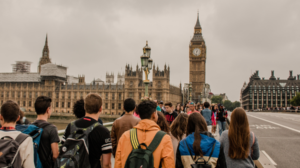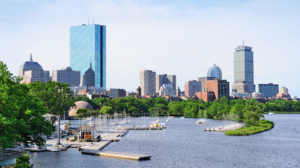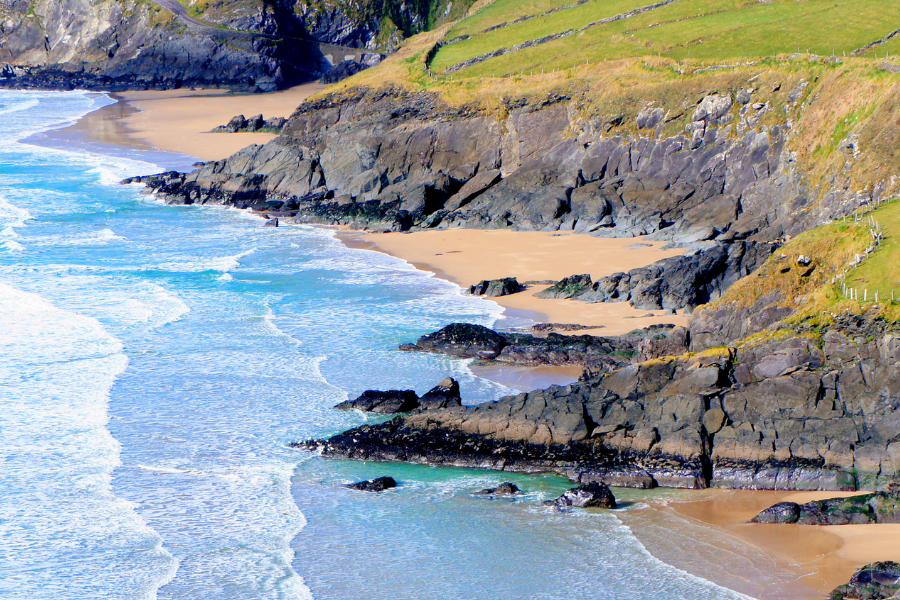Comparison between Cork, the second biggest city in the Republic of Ireland, and Dublin seem natural. For one thing, the first question you get upon mentioning that you are studying abroad in Ireland is “So how do you like Dublin?” For some reason, for a second guess, Limerick or Galway seem more popular. I am not sure why Cork gets overlooked by the Americans I have encountered, but the city’s ego does not permit it. Having now visited Dublin a few times and having a decent (but limited) basis for comparison, I have a few remarks on the rivalry between the capital and the so-called “real capital.” (Usage Note: I am sure it’s only Corkonians that use this nickname.)
In some ways this rivalry feels inevitable. Take the natural rivalry between capital and second cities in other countries. For instance, Paris versus everywhere else in France, or at least everyone else insisting that Parisians are not representative. Similarly, New York City versus the eponymous state, seeing as far too many people are under the impression that NYC is the capital rather than Albany. More than anything however, the Dublin-Cork rivalry reminds me of the alleged one between New York City and Boston. Those in the former city deny any rivalry exists, or even could exist, while the smaller city triumphantly asserts its greatness.
While those on the East Coast of Ireland do not see eye to eye on Cork’s superiority, there is agreement on another nickname, “The Rebel County.” It was not just one event which gave rise to this term. Cork has several centuries, and arguably millennia, of experience in fiercely resisting domination, under the reign of chieftains, kings, and the modern Taoiseach. Perhaps most famously during Ireland’s war of independence, but rebellion was the order of the day for ages. The full 1,300 years are spelled out here for any history buffs.
From this digression into actual comparisons. Though County Cork is the largest one in the Republic Ireland, Cork, currently has a population of about 125,000, making it second-populous after Dublin, and only third largest when Belfast is thrown in to the mix. However, a proposal is being considered to massively expand the physical boundaries of the city, ultimately bringing the population up to about 165,000 people. Cork’s history is further enriched by its importance as a port city and trading center, activities which have historically brought a lot of wealth to the area. This history stretches back quite far. Based on an archaeological that was still being excavated during my semester than, evidence was discovered that Cork began as perhaps the oldest Viking settlement in Ireland, trouncing the former oldest settlement, Waterford. In contrast, Dublin is approximately 1,000 years old, having been founded as an early Christian settlement prior to the Vikings’ arrival. However, cultural aspects of the two cities are harder to quantify.
I was interested in a smaller city from the get-go, seeking an experience with more local character and fewer of the same international brands you would see in every other major city. In Ireland in particular, Dublin is sometimes viewed as a city with a foreign lacking in national character, and architecturally bearing the mark of centuries of British colonialism. The “real capital” is more distinctive, down to elements which are the butt of jokes elsewhere. For instance, the Cork accent. (Side note: why do we in the United States refer to Irish accents as a brogue? That’s a shoe in Irish.) When asking around before arriving in Ireland, multiple times I was told to watch Tommy Tiernan’s bit which mocks this very subject.
Still the link between Cork and Dublin is sometimes literal. During my semester abroad, when Kendrick Lamar’s only tour stop in Ireland was Dublin, a shuttle bus in Cork ran directly from the city center to the concert. I think this illustrates the relationship between the cities in my experience as a student. Dublin is host to the country’s greatest variety in foods, entertainment, and other exciting things, just by virtue of being the capital and largest city. It is also expensive and crammed to the brim with tourists. My first experience in Dublin, was the first time I had seen anywhere selling bubble tea in months. On the other hand, that simple day-trip left me exhausted by the end of it, totally ready to return to Cork’s slower pace of life. Still, for those who fear going stir-crazy, Cork actually is decently positioned as a “base city”. It is a stone’s throw from the famous Dingle Peninsula and Ring of Kerry in neighboring County Kerry, and a few hours from Kilkenny, the Rock of Cashel, and Galway. Part of this a product of Ireland being a small country. Half the time, flying out of Dublin is so much cheaper that it justifies taking one of the multiple bus routes directly from Cork to Dublin Airport.
In the end, as a short-term resident of Ireland, I have to admit that I like them both. Ultimately I have no regrets over choosing University College Cork over other options in Dublin. Ireland is a consistently popular study abroad for American students, approximately the seventh-most popular in the world according to the Institute of International Education’s Open Doors report. However, I would encourage anyone considering this beautiful country to look beyond the East Coast. Cork is a charming, manageable city with a lot to love. The jury is still out on whether local residents’ pride in their city is excessive, but I certainly feel a large part of it is deserved!










